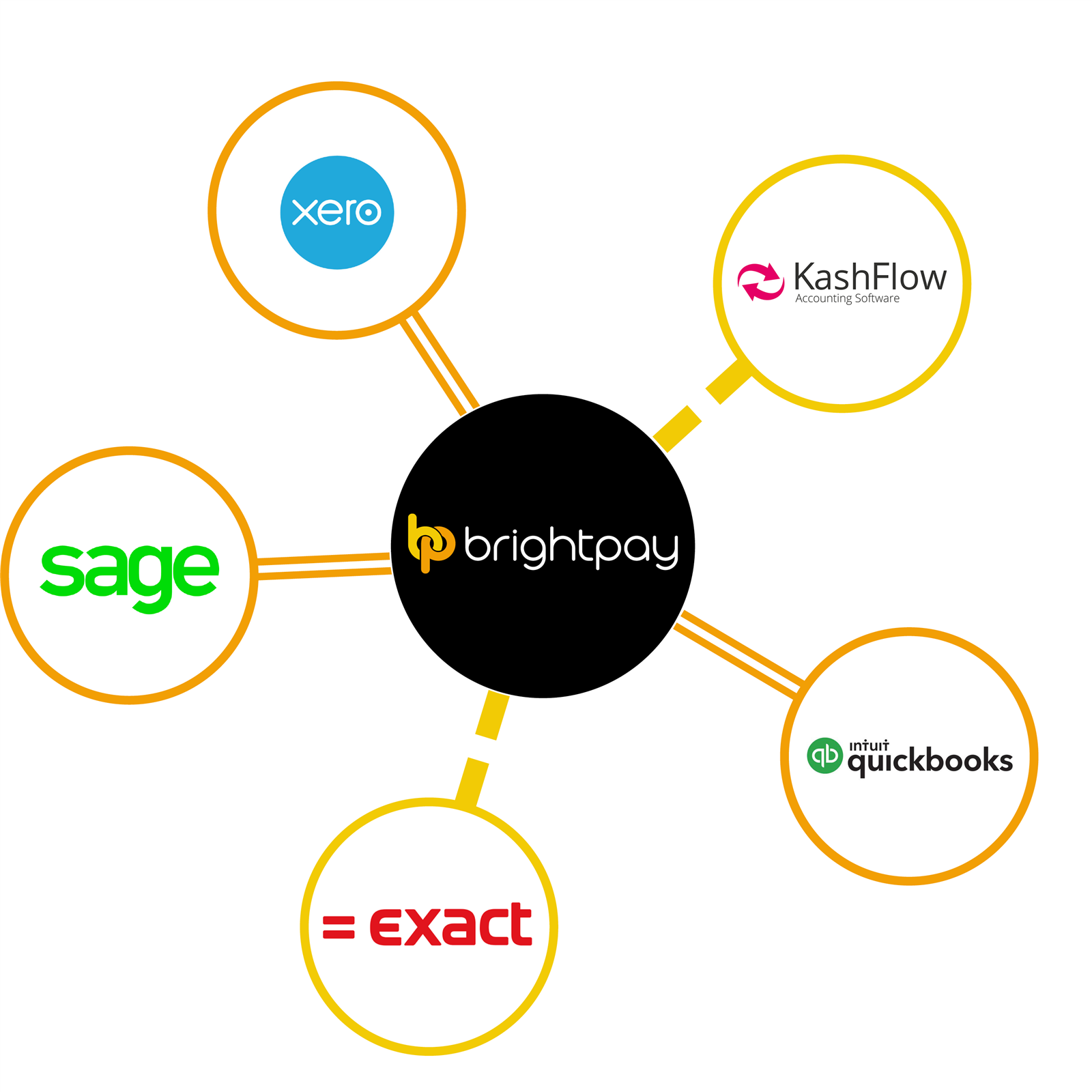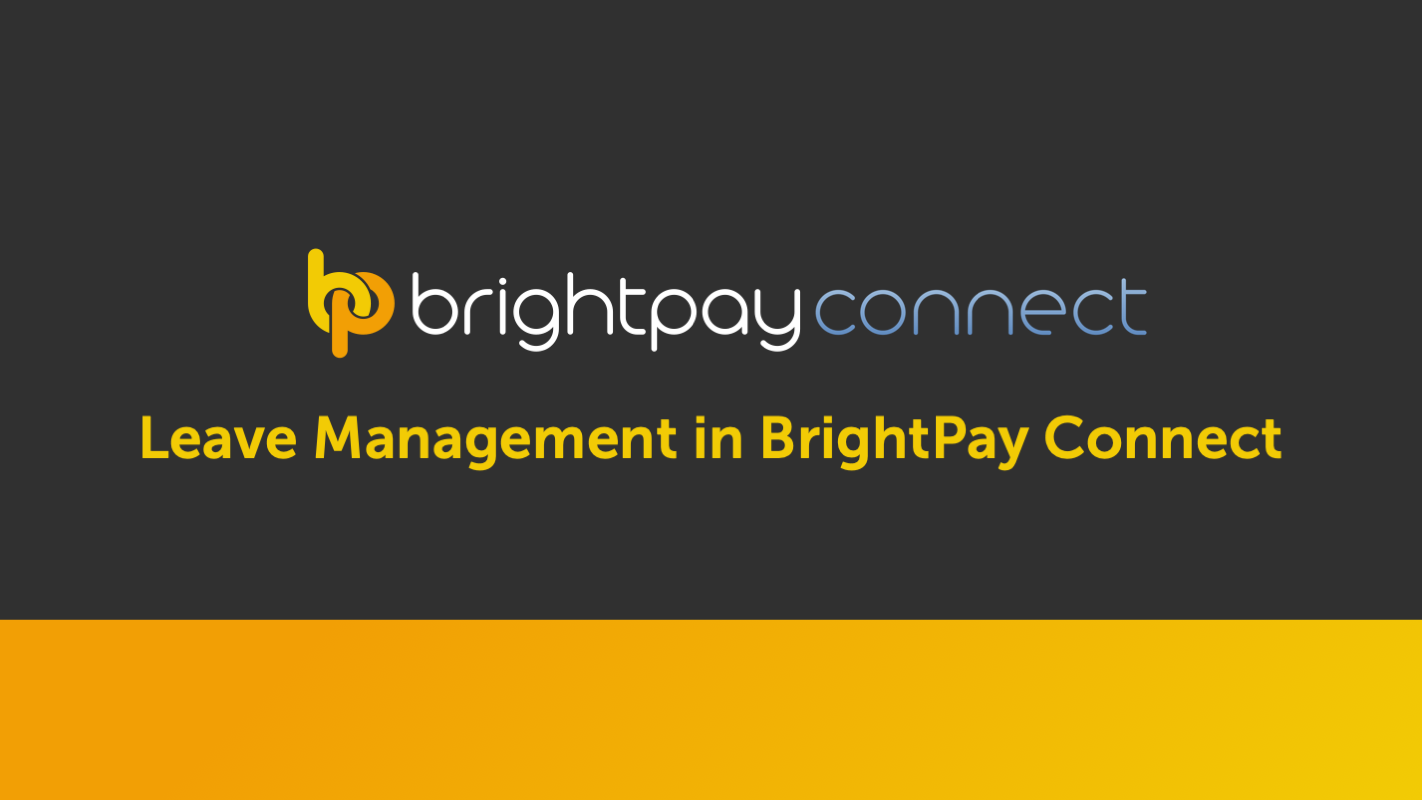Jan 2020
30
Customer Update: January 2020
Welcome to BrightPay's January update where you will find out about the latest hot topics and events affecting payroll. Our most important news this month include:
-
Easily integrate BrightPay with your accounting software
-
BrightPay Connect monthly subscription pricing - How will it work?
-
What the Tory victory means for IR35 and off-payroll working
Free Webinar: Last chance to register!
Payroll transformed: How cloud platforms supercharge the payroll process for employers
Join BrightPay for a free webinar where we look at cloud innovation and how it is positively impacting the payroll process for employers. Not in the distant or even medium-term future: this is happening right now. Register now to see how next-generation cloud features can revolutionise your business.
Easily integrate BrightPay with your accounting software
BrightPay’s payroll journal feature allows users to create wage journals from finalised pay periods so that they can be added into various accounting packages. With this direct integration, users will be able to send the payroll journal to the accounting package directly from within BrightPay. BrightPay includes direct API integration with Sage One, Quickbooks Online and Xero, and coming soon is integration with FreeAgent, AccountsIQ, Kashflow and Twinfield.
Employer obligations: Simple ways to comply using BrightPay Connect
There's been a lot of talk recently about online client platforms. They can bring many benefits to both employers and employees alike - from online payslip access to annual leave management to a HR document hub. But can cloud payroll portals really help with employer obligations? Here we look at how BrightPay Connect can help with record keeping requirements, employment law obligations and GDPR compliance.
Annual Leave Management: Say Goodbye to Paper Trails and Excel Spreadsheets
Minimum Wage Rates Increase from 1st April 2020
It has been announced that on the 1st April 2020 the minimum wage will increase by amounts ranging from 4.6% to 6.5%. An employee's age and if they are an apprentice will determine the rate they will receive. BrightPay can track employee hourly rates against the National Minimum/Living Wage (including apprentices), UK Living Wage, London Living Wage, or they can be marked as not eligible.
Jan 2020
28
Employer obligations: Simple ways to comply using online payroll portals
There's been a lot of talk recently about online client platforms. They can bring many benefits to both employers and employees alike - from online payslip access to annual leave management to a HR document hub.
But can cloud payroll portals really help with employer obligations? Here we look at how BrightPay Connect can help with record-keeping requirements, employment law obligations and GDPR compliance.
Record-Keeping Requirements
By law, employers must retain certain documentation relating to their employees for specific minimum periods. Good cloud systems will record this information for you, meaning everything is stored securely online.
Not only is BrightPay Connect useful for keeping a record of payroll information, but employers can also use it to hold various employment and leave records. Sometimes record-keeping can be something that we let slip or are perhaps not as diligent as we might be with say, payroll files, where we tend to be very diligent.
If you have an inspection, the inspector will want to see all of the employee records, whether it’s pay records, annual leave, sick leave, maternity leave, and they’ll expect the records to be readily accessible. With BrightPay Connect, you can access the calendar and reporting features to see at a glance who has taken leave, and when, so should an inspector arrive, you can simply log into Connect to access the records, rather than getting into a panic about what is saved where.
Employment Legislation
For employers, there’s also compliance with employment legislation. This will be even more important over the coming months, as three new pieces of employment legislation come into force on 6th April 2020.
One of the changes being introduced is the introduction of a day-one right to receive a written statement of terms and conditions (more commonly known as a contract of employment). At the moment, this needs to be given to new employees, no later than two months after the beginning of their employment, so this new day-one timeframe requirement from this April of providing an employee with their contract on their first day of employment will be a big change for many employers. For employers who use Bright Contracts to create contracts of employment, the software will soon be updated in line with the new legislation.
Free Webinar: Employment Law Update - Register now
If you are on leave or not based at the same location as the new employee, meeting that day-one deadline could be challenging, and that’s where the online employer and employee portals can help. Being able to upload employment contracts and other employee documentation onto the cloud from any location, and share it with the employee, could be a lifesaver. With BrightPay Connect, the documents and resources hub also offers an activity log, which gives the date and time stamps in relation to when an employee accessed the document.
GDPR Compliance
In the new world of GDPR, non-compliance will be a continuous threat to all businesses. BrightPay Connect offers significant benefits to help your business or practice comply with GDPR legislation.
GDPR Remote Access for Employees
The GDPR legislation includes a best practice recommendation, whereby organisations should provide individuals with remote access to a secure system, which would give them direct access to their personal information. An online employee portal, such as BrightPay Connect, will store employee’s information online, giving the employee access to personal data that employer has on file for them. The employee can update their contact information easily, with changes instantly and seamlessly updated in the payroll software.
Data Security
Your data accuracy and compliance improve even further when you add in the ability to automatically backup payroll data in the cloud. If you only keep your payroll data on your desktop, you are at risk of losing the information. How prepared are you for a disaster recovery situation? Would employees still get paid if the information was lost? Without cloud backup, the consequences would be dire. But now, these problems can be solved quickly, and that’s because of cloud innovation.
Cloud integration introduces the ability to automatically and securely backup the payroll data to the cloud. BrightPay Connect maintains a chronological history of all your backups, and these backups can be restored at any time if required. It’s simply an added layer of data protection to safeguard your payroll data.
Book a demo today to discover more ways that BrightPay Connect can help you comply with your employer obligations.
Jan 2020
28
Parental Bereavement Leave
Research suggests that 1 in 10 employees are likely to be affected by the death of a loved one during their employment. In response to this, "Jack’s Law" has been introduced through the Parental Bereavement (Leave and Pay) Act. This will come into force in April 2020 and now gives employed parents, who have lost a child, the right to take paid statutory leave to allow them time to grieve.
Who is entitled to this leave?
All employees have a ‘day one’ right to this bereavement leave. Parents and primary carers will be entitled to paid bereavement leave if they have been employed for a continuous period of 26 weeks. Female employees who suffer a stillbirth after 24 weeks of pregnancy will still be entitled to up to 52 weeks of maternity leave and/or pay, as will a mother who loses a child after it is born.
What is the entitlement?
- Bereaved parents will be entitled to take two weeks’ bereavement leave.
- There are rules around when this leave is available to be used and how it should be taken.
- Paid bereavement leave is paid at the lower of £151.20 a week or 90% of salary. As this is a statutory payment, it is at the employer’s discretion if you wish to top-up this amount.
Employers should now put plans in place to introduce and manage the Parental Bereavement Leave policy. You will need to determine if you will give a top-up payment and the approach you will take to communicating this to your staff.
Other considerations
Different religions have their own bereavement traditions and funeral rites. If you were to refuse an employee to observe their beliefs and customs, it could amount to religious discrimination. Employees who suffer a loss may experience mental health issues such as depression and/or anxiety. This could constitute a disability under the Equality Act. It is advisable to look into further training on the Equality Act to prevent potential issues from religious discrimination or mental health arising.
The Bright Contracts Handbook will be updated shortly to include a new Parental Bereavement Leave Policy.
Jan 2020
8
Minimum Wage Rates Increase from 1st April 2020
It has been announced that on the 1st April 2020 the minimum wage will increase by amounts ranging from 4.6% to 6.5%. The National Minimum Wage (NMW) is the minimum pay per hour that most employees are entitled to by law. An employee's age and if they are an apprentice will determine the rate they will receive.
These rates were recommended to the government by the Low Pay Commission, an independent body that advise on the national minimum wage and living wage. It is estimated that approximately three million workers will see pay increases due to the new rates being introduced. Employees aged 25 and over will see a rise of 51p from £8.21 to £8.72, which will result in an increase of £930 annually.
Please see the current rates and the new rates below:
| Rates from 1 April 2019 are | Rates from 1 April 2020 will be | |
| 25 yrs old and over | £8.21 per hour | £8.72 per hour |
| 21-24 yrs old | £7.70 per hour | £8.20 per hour |
| 18-20 yrs old | £6.15 per hour | £6.45 per hour |
| 16-17 yrs old | £4.35 per hour | £4.55 per hour |
| Apprentices under 19 or 19 or over who are in the first year of apprenticeship |
£3.90 per hour | £4.15 per hour |
It has also been recommended by the Low Pay Commission that the national living wage will be paid to employees aged 21 and over. The National Living Wage is an obligatory minimum wage currently paid to employees aged 25 and over that was introduced in April 2016. The government aims to achieve this recommendation by 2024.
Jan 2020
3
New Year, New HR Resolutions!
Start 2020 with some HR goals to put you on the front foot. Make your goals achievable and easy and you won’t be one of the 80% of people whose resolutions have fallen by the wayside by February 1st! Consider how technology could help you achieve a leaner you in 2020…
1. Cut out the fat…
Hate all those repetitive admin tasks that keep popping up over and over like manually recording your employees annual leave, amending employees’ personal details, making sure they are receiving and reading important company updates? Well, now is the time to get rid of them. Consider how an online platform could take care of those tasks and many more.
2. Get out and about more…
Manage your HR tasks from almost anywhere by using your Employer Dashboard to monitor your employees annual leave requests, review your payroll reports and keep an eye on your HMRC payments. As long as you have an internet enabled device, it can all be at your fingertips… anytime, anywhere!
3. Communicate better…
Use online document upload features to distribute, track and manage any information you want your staff to have access to. Contracts, policies, training, schedules, you name it. You have the peace of mind of knowing your employees have that information at their fingertips and that you can see a log of when and how often they are accessing it.
4. Face your fears….
GDPR and cybersecurity. The two scariest words in the English language. Free yourself from that fear with a robust online portal. Fully secure servers, individually password protected and fully GDPR compliant.














